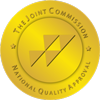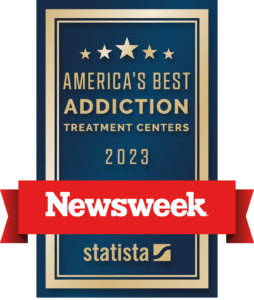What is Clonidine?
Clonidine is part of a class of drugs called centrally acting alpha-agonists or antihypertensives. It works in the part of the brain that helps regulate behavior, attention, and how we express emotions.
Doctors commonly prescribe clonidine to lower blood pressure, and it does that by lowering the levels of certain chemicals in your blood. And when the chemicals are lowered, it allows your blood vessels to relax and your heart to beat more slowly and easily.
Because of the calming effect it has on the body; clonidine is also used to treat ADHD (attention deficit hyperactivity disorder).
Clonidine is not a controlled substance, so it doesn’t have a DEA drug rating. But each state has its laws prohibiting the possession of a prescription drug without a prescription. Depending on the state, possessing clonidine without a valid prescription can bring a charge of a misdemeanor or a felony. Penalties range from fines and probation to time in jail or prison.
Clonidine for Opioid Detoxification
Medically supervised opioid withdrawal is also known as a medically assisted detoxification. It involves giving medication to patients to relieve the severity of withdrawal symptoms.
Medications used in the treatment of withdrawal symptoms include opioid agonists such as buprenorphine and methadone (types of opioids). This form of detox also utilizes alpha-agonists like lofexidine and clonidine (non-opiate).
For many years, the main plan for detox involved suppressing the withdrawal symptoms with methadone and then gradually reducing the methadone dose. Using methadone this way has been limited by government restrictions on the prescribing of methadone and the dislike of the drawn-out feature of methadone withdrawal.
The use of clonidine in detoxification from opiates has proven that it can quickly suppress the signs and symptoms related to opiate withdrawal. Recent studies also indicate that clonidine is useful for withdrawal from methadone maintenance. It can help detoxify the patient in less than 14 days instead of the usual 3 to 6 months on methadone. There is a high rate of success in achieving a zero dosage.
Treatment of Choice
According to the American College of Clinical Pharmacy (ACCP), studies have shown that clonidine weakens the opiate withdrawal syndrome considerably. Inpatient and outpatient clinical studies show clonidine to be reasonably safe, specific, and effective for detoxifying opiate addicts. It is the “go-to” medication prescribed by most physicians for the treatment of opioid withdrawal.
ACCP also states that clonidine seems best suited as a transition from opiate dependence to a maintenance drug such as naltrexone. They consider it to be an important treatment option for certain selected opiate addicts. It may be the “treatment of choice” when detoxification using methadone is not appropriate, not available, or unsuccessful.
Why Clonidine?
Clonidine is an extremely powerful medication for easing opiate withdrawal symptoms. It is the most prescribed medication because it works. Clonidine doesn’t eliminate all the symptoms, but, when used correctly, it can ease many opiate withdrawal symptoms.
Opioid Withdrawal Symptoms
Clonidine provides relief to many of the physical symptoms of opioid withdrawal, including:
- Sweating
- Diarrhea
- Vomiting
- Abdominal cramps
- Chills
- Reduces anxiety
- Tremors
- Slows down a racing heartbeat
- Helps you fall asleep and stay asleep
The main reason for supervised withdrawal is to successfully and safely ease the patient into medically-assisted treatment for opioid use disorder. Withdrawal alone does not usually result in continued abstinence.
Likewise, it doesn’t focus on the reasons the patient became addicted in the first place or the damage done to mental health, physical health, relationships, employment, and finances.
Detox is just the beginning of the treatment of an opioid use disorder (OUD). A continuing program of therapy, peer support, and tapering off medications is necessary for long-term abstinence.
Clonidine Side Effects
Using clonidine for opiate withdrawal can lead to side effects.
Emergency side effects
You should get emergency medical help if you show signs of an allergic reaction such as:
- Hives
- Difficulty breathing
- Swelling of your face, lips, tongue or throat
When to call a doctor
Call your doctor if you have:
- Severe chest pain, shortness of breath, irregular heartbeats
- Very slow heart rate
- Severe headache, blurred vision, pounding in your neck or ears
- Nosebleeds
- Anxiety or confusion
- A light-headed feeling like you might pass out
Common side effects
- Drowsiness, dizziness
- Irritability or fatigue
- Dry mouth, loss of appetite
- Constipation
- Dry eyes
- Sleep problems, insomnia, nightmares
Is Clonidine Addictive?
Clonidine has mild sedative effects, and that’s how it works to relax the blood vessels and make it easier for the heart to pump blood in people with high blood pressure.
However, some people take clonidine to enhance the effects of methadone and other substances. Its sedative properties make it attractive to people who just want to experience a sense of relaxation and happiness.
Long-term use of clonidine can produce serious consequences, including low blood pressure and slow heart rate. The American College of Medical Toxicology warns that stopping clonidine suddenly can cause dangerous spikes in blood pressure, agitation, and tremors.
It has been determined by studies conducted by Professor David Nutt et al. that clonidine and other sedatives have the potential to become addictive. In fact, they have a higher addictive potential than LSD and ecstasy, which are usually considered more dangerous.
Signs of Clonidine Addiction
According to the American Psychiatric Association’s Diagnostic and Statistical Manual of Mental Disorders, some of the signs of addiction are:
- Taking more frequent or larger amounts of the drug than originally intended.
- Unsuccessfully attempting to cut down or stop.
- Spending a lot of time trying to get, use, and recover from the effects.
- Experiencing cravings for the drug.
- Inability to fulfill school, work, and home obligations due to drug use.
- Continuing to use the drug despite social or relationship problems.
- Taking the drug when it’s unsafe to do so. (driving, operating machinery, etc.)
- Continuing to use the drug knowing that you have a physical or psychological problem due to the use.
- Tolerance (you need more of the drug to achieve initial results).
- Withdrawal symptoms when not using.
Is There a Risk of Overdose on Clonidine?
Clonidine and other sedatives have been suspected in thousands of overdose deaths.
Public health officials are particularly concerned about the use of sedatives with synthetic opioids. Data published by the Centers for Disease Control and Prevention (CDC) in 2016 showed that almost 80% of overdose deaths involving a synthetic opioid also involved alcohol or another drug.
In most cases, the other drug was the sedative, benzodiazepine. Combining sedatives such as clonidine, with an opioid, causes lethality.
However, overdoses mainly seem to occur because of unintentional ingestion by children, prescription errors, and intentional overdoses in adolescents and adults. In a study of overdoses in adults, consistent bradycardia (slow heartbeat) and a depressed central nervous system were found.
An overdose causes deep sedation and affects the ability to breathe normally. But the poisonous effect of the drug was not life-threatening.
What’s the Difference Between Opioids and Opiates?
The term “opiate” refers to any drug that is naturally occurring in the opium poppy plant. Opium, codeine, and morphine are opiates.
The term “opioid” refers to any drug synthesized or partly synthesized from an opiate and causes a similar effect. An opioid is any substance, either natural, synthetic, or partly synthetic, that attaches to receptors in the brain and causes opiate-like effects.
Examples of opioid drugs include heroin, hydrocodone, oxycodone, and methadone.
This means that all opiates are opioids, but not all opioids are opiates. Many organizations have stopped using the term “opiate” and are now using “opioid” to refer to all the opioid and opiate drugs.
It’s important to point out that although opiates are made from naturally occurring substances, they are not safer than synthetic or semi-synthetic opioids.
Types of Opioid Drugs
The three main types of opioid drugs are:
- Opiates
- Semi-synthetic opioids—created in labs from naturally occurring opiates.
- Synthetic opioids—created entirely in a lab.
Treatment for Opioid Use Disorder
Detox
After an initial assessment by your doctor or another medical professional, you will probably need detoxification. This is the process of ridding your body of toxins. Withdrawal from opioid dependence is extremely uncomfortable and often causes people to give up. That’s why a medically supervised detox is so important.
Medical professionals can prescribe medications such as clonidine to help ease the way through the symptoms.
Treatment
After detox, you may still need medication for a period to address your cravings for opioids, depending on the severity of your addiction. Substance abuse treatment in Kansas City involves therapy and combinations of therapies specifically for your situation. Counseling for opioid addiction can help you:
- Change your behaviors related to drug use.
- Learn and build healthy life skills.
- Stick with your other forms of treatment, such as maintenance medications.
Treatment Programs Available
Depending on your home situation and other considerations, you may choose from different treatment programs such as:
- Residential—where you will live at the treatment center.
- Partial hospitalization—which is designed for people with a mental health or co-occurring condition. You may live onsite or not as needed.
- Intensive outpatient—where you will live at home but attend intense counseling sessions each day at the treatment center.
- Outpatient—is for people who have support at home, are stepping down from a more intense program, or do not have a severe addiction problem.
- Sober living—for after you complete your initial program, but before you go home to face day-to-day stresses on your own. You live in a residence with other people in recovery.
Making It All Work for You
If you or someone close to you has an opioid addiction, you know first hand how debilitating and controlling it is. It doesn’t have to be that way. At Sana Lake Recovery Center, we have medically proven methods and evidence-based therapies to help effect a long-term and lasting recovery.
Our staff of professionals will be with you from entry to completion with one concern—helping you achieve your best life. There is no reason to wait. Contact us. Discover our programs and therapies, and you will understand why we are the best treatment facility in the Midwest.



